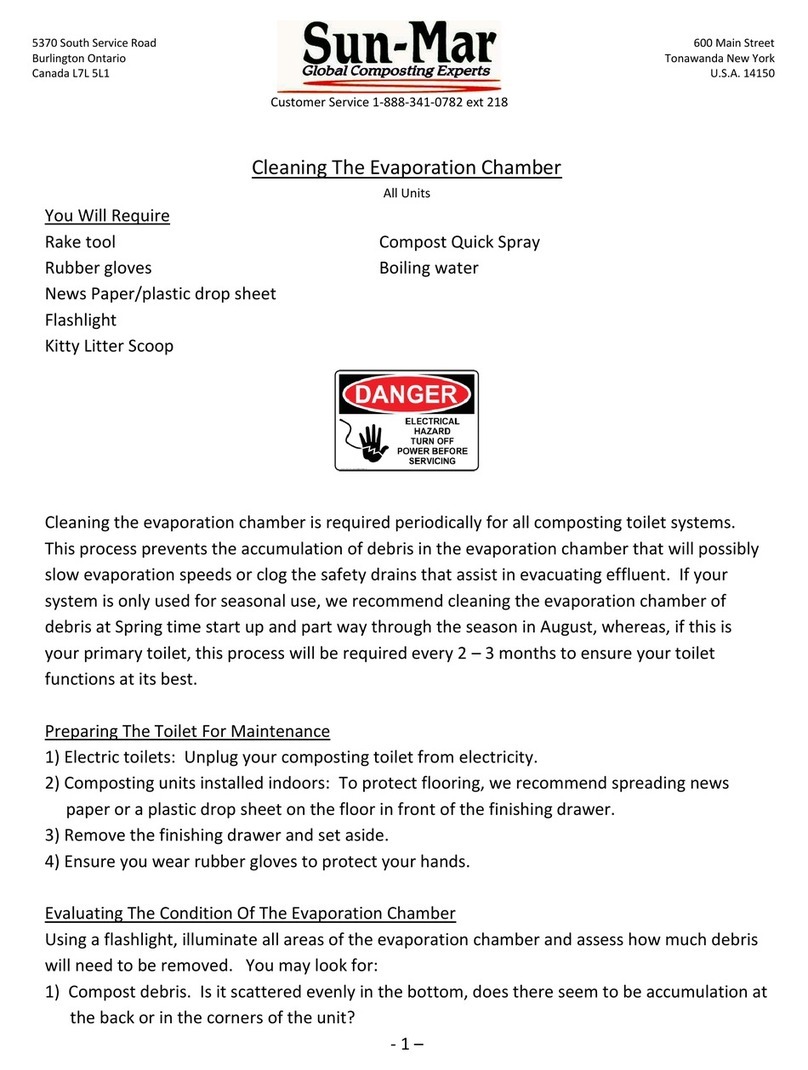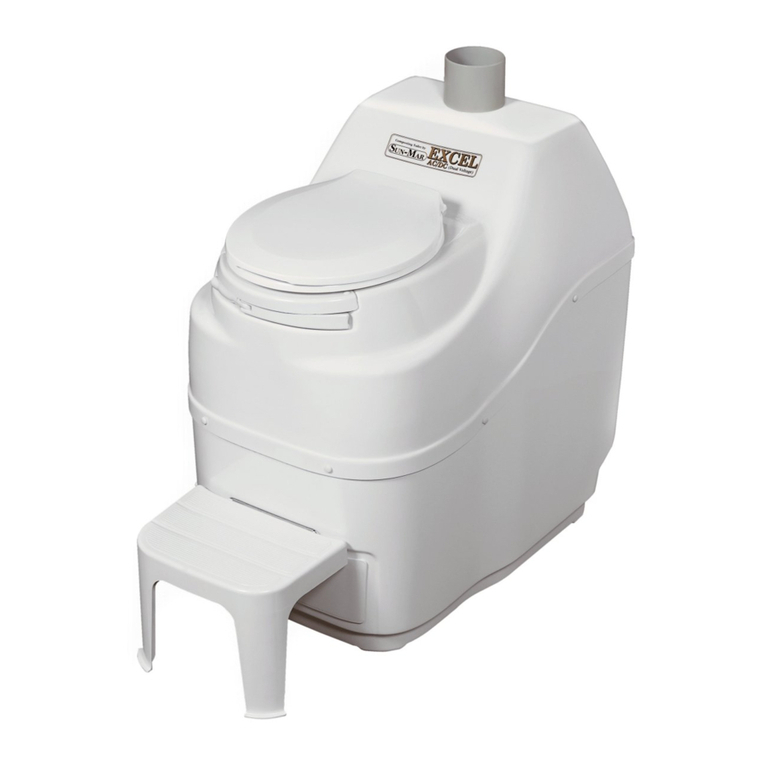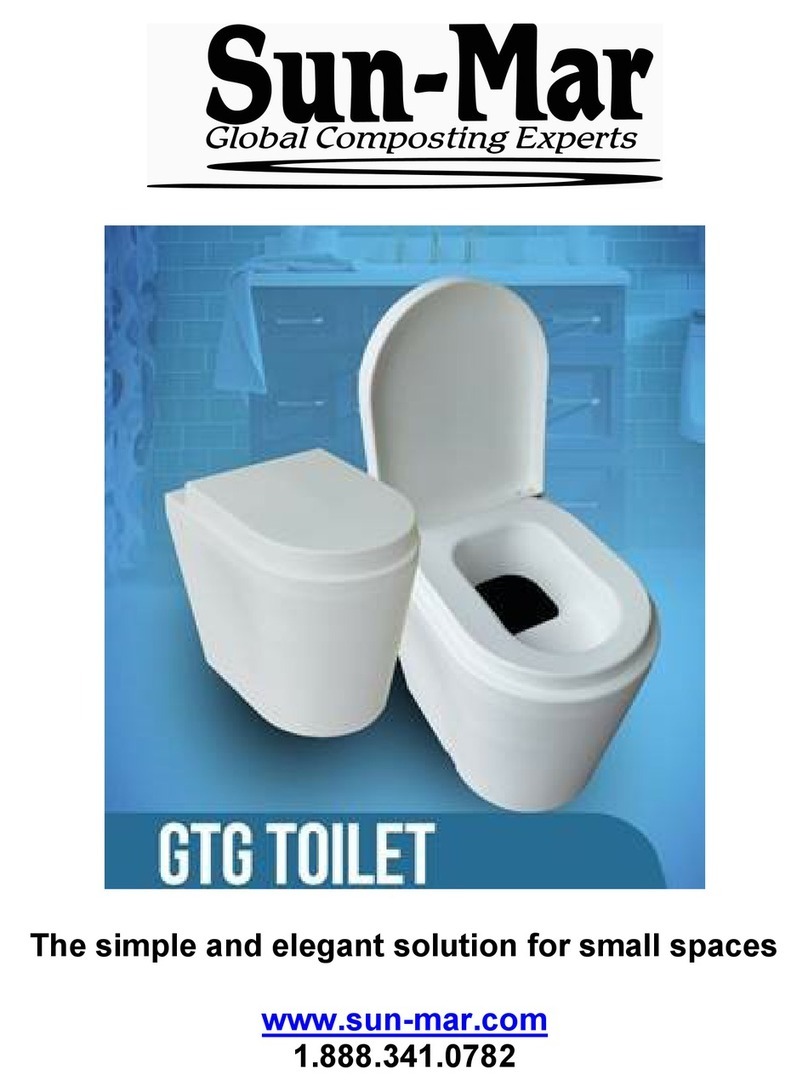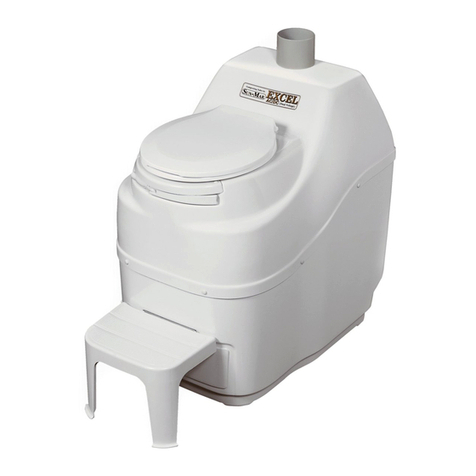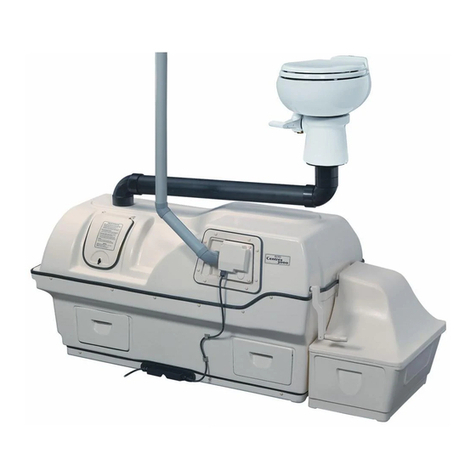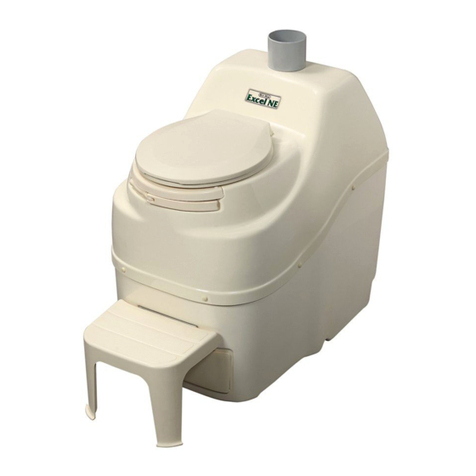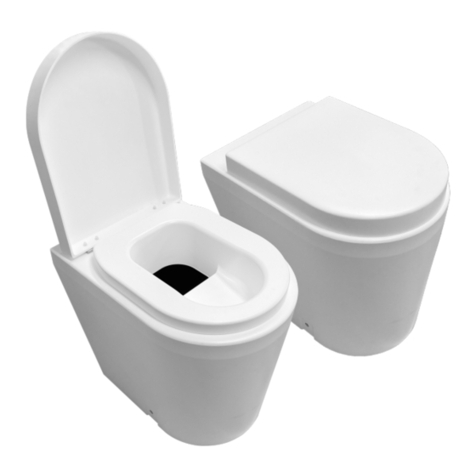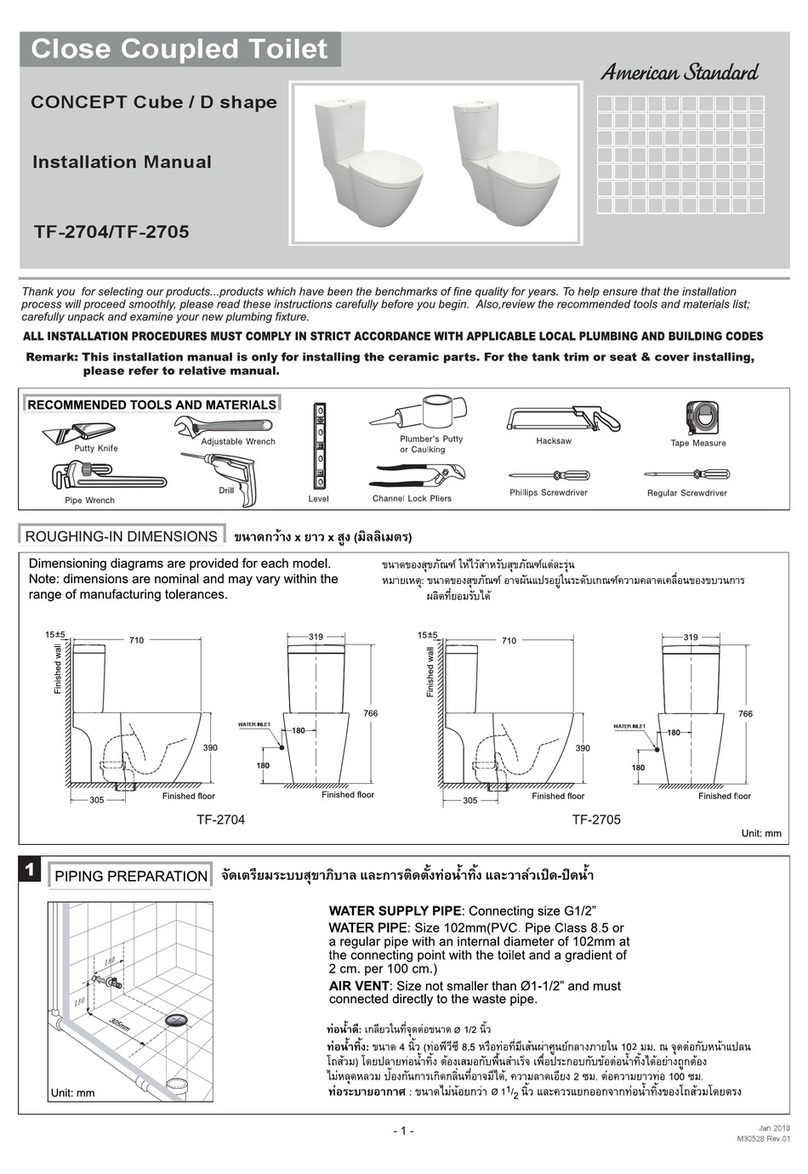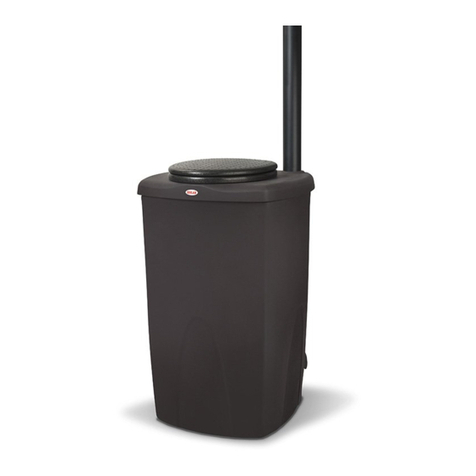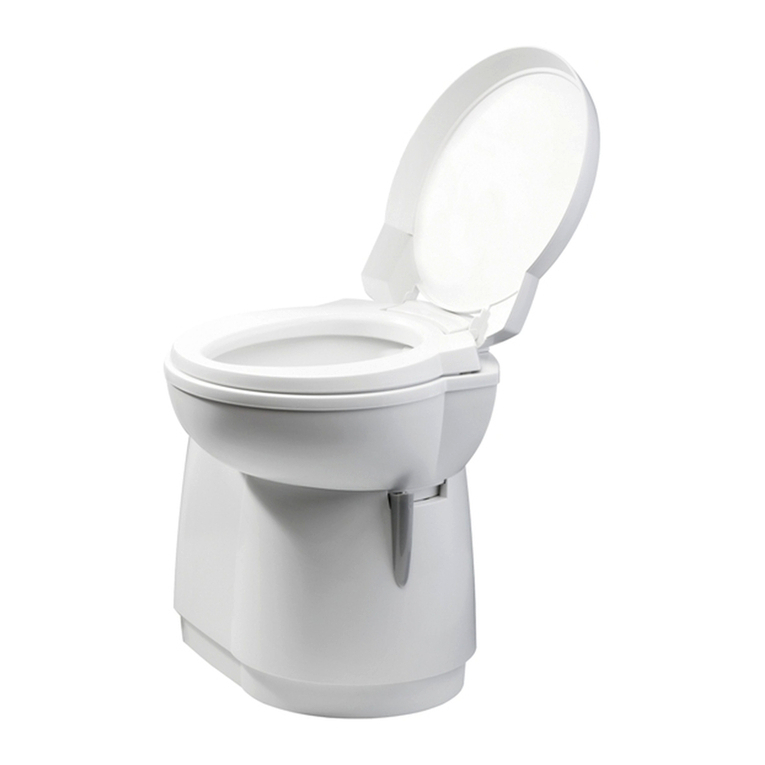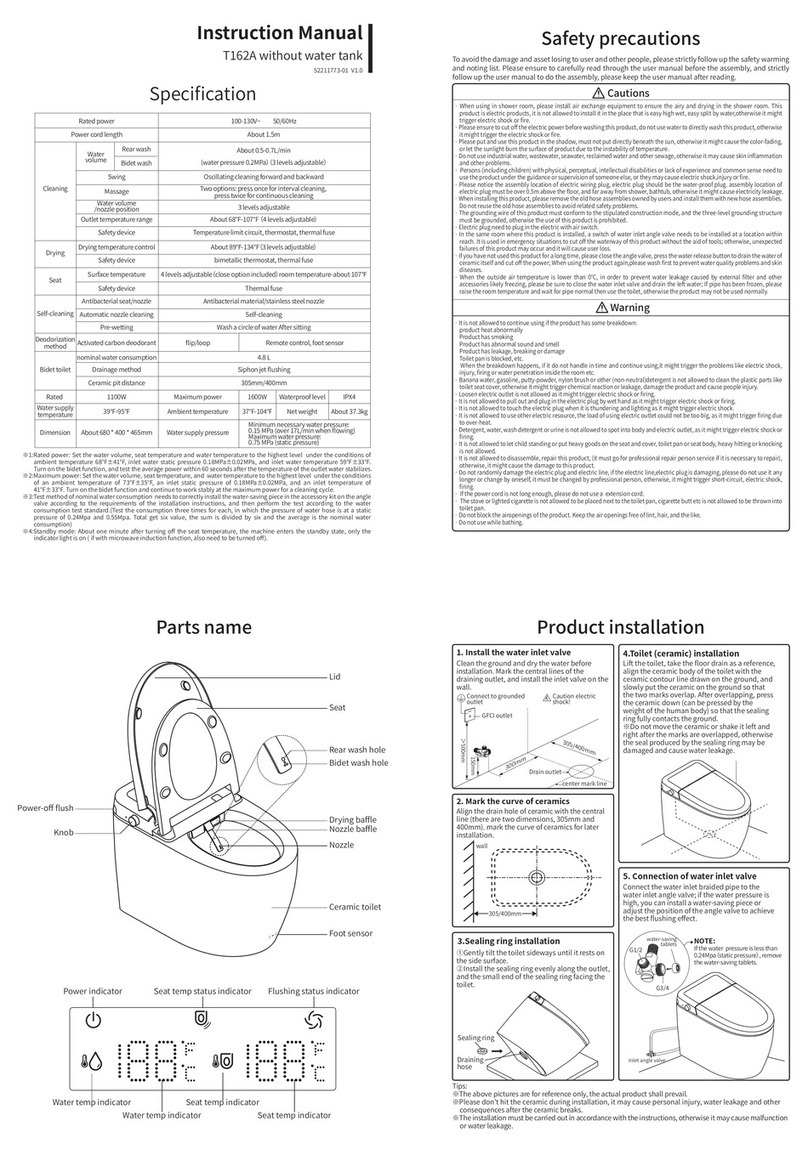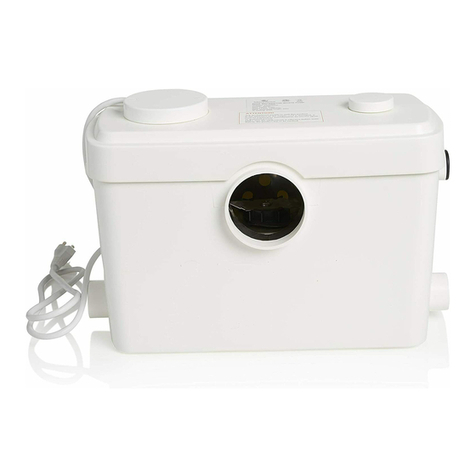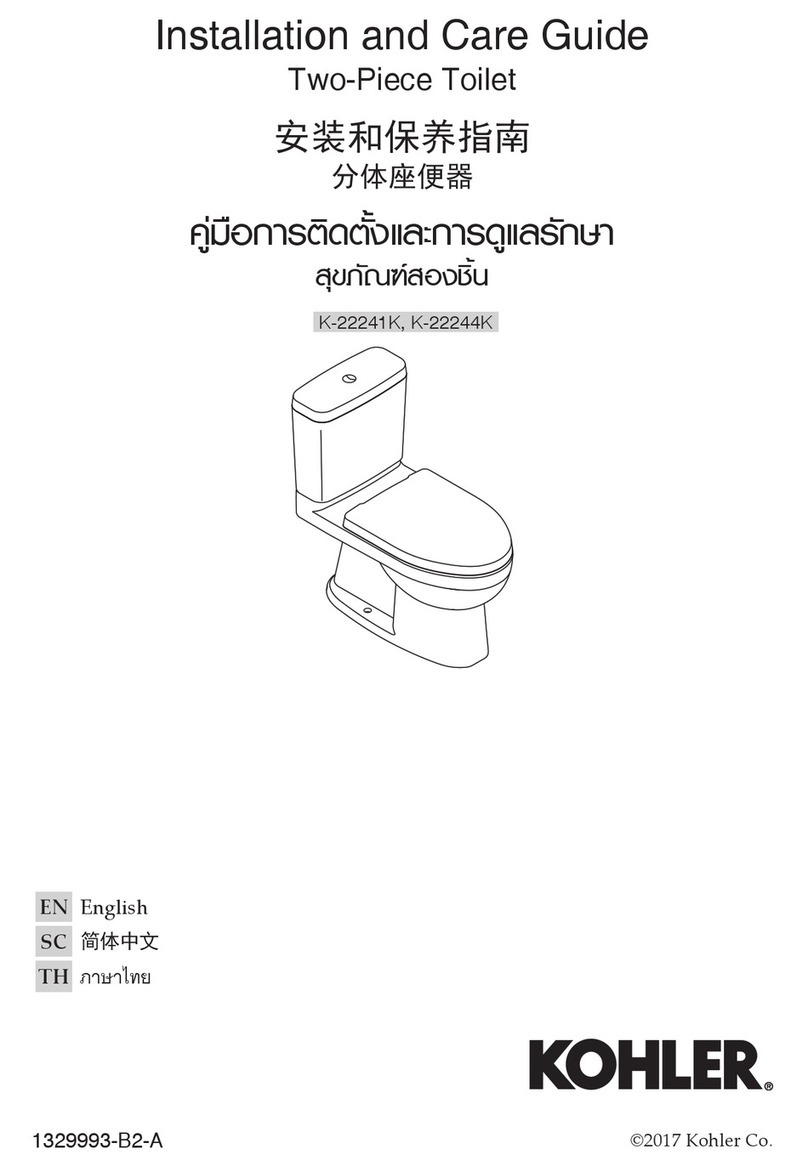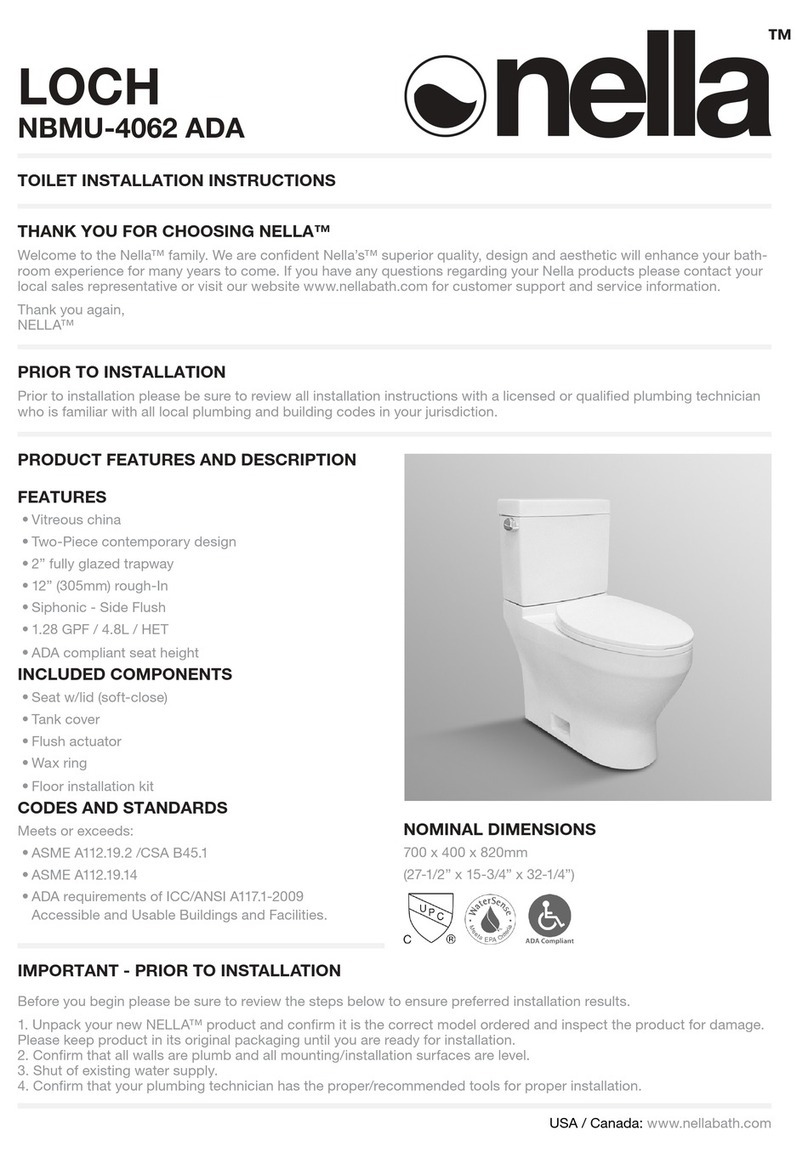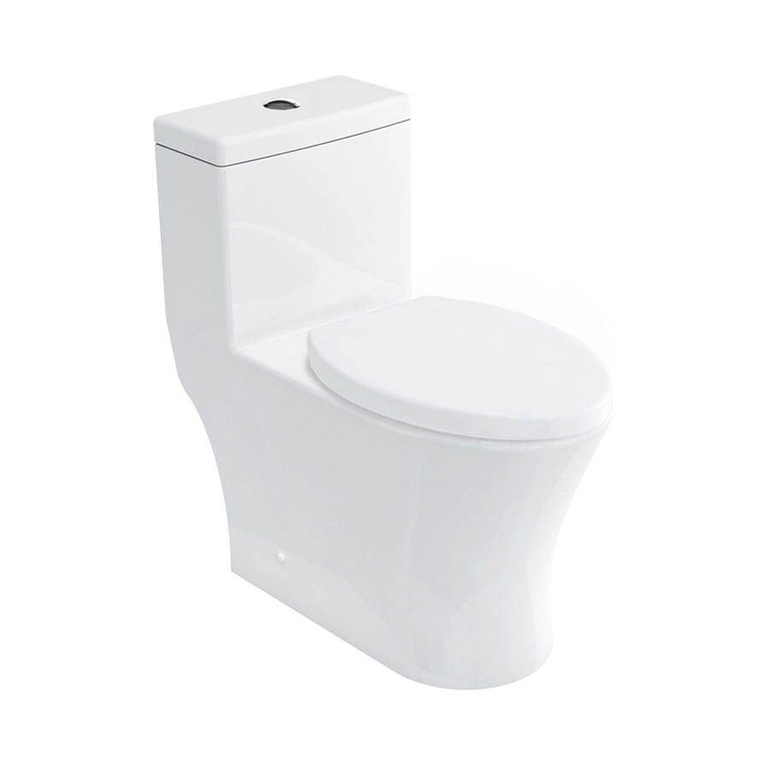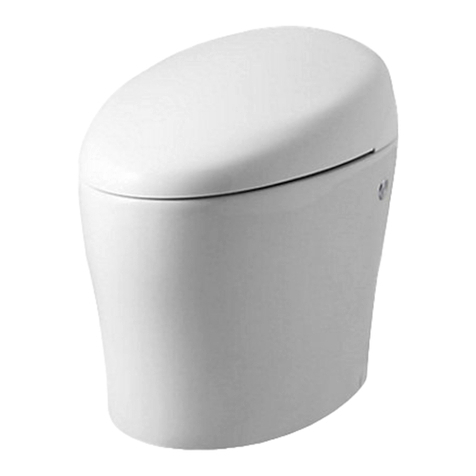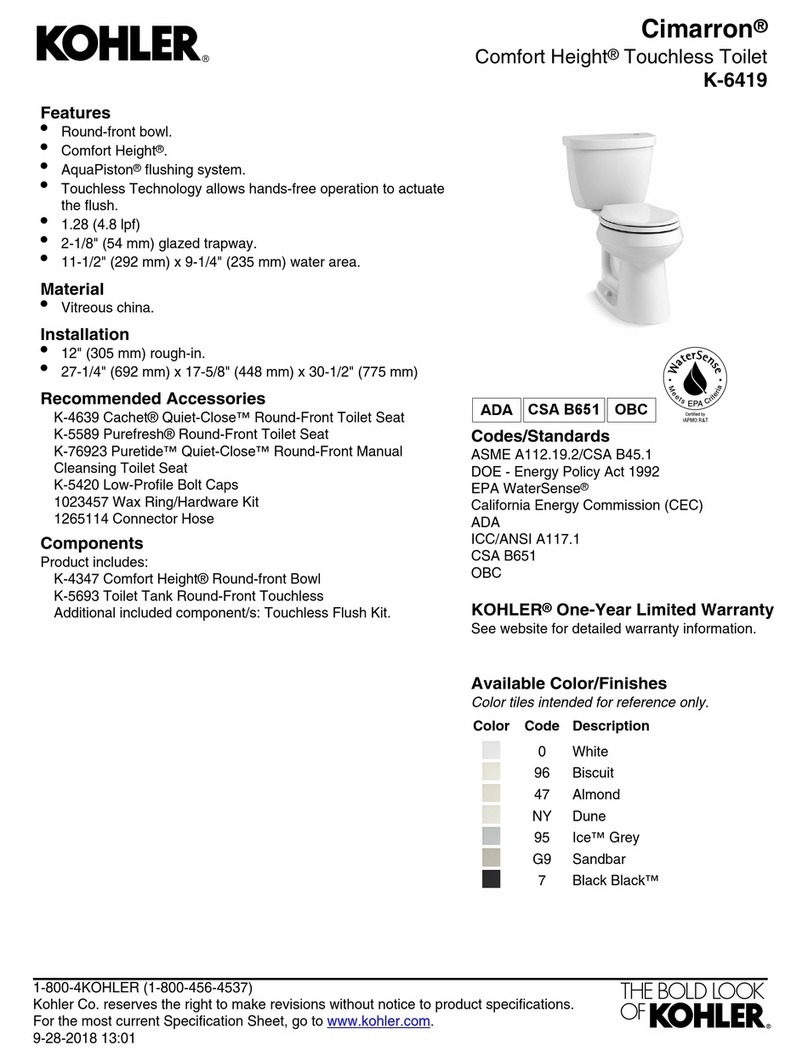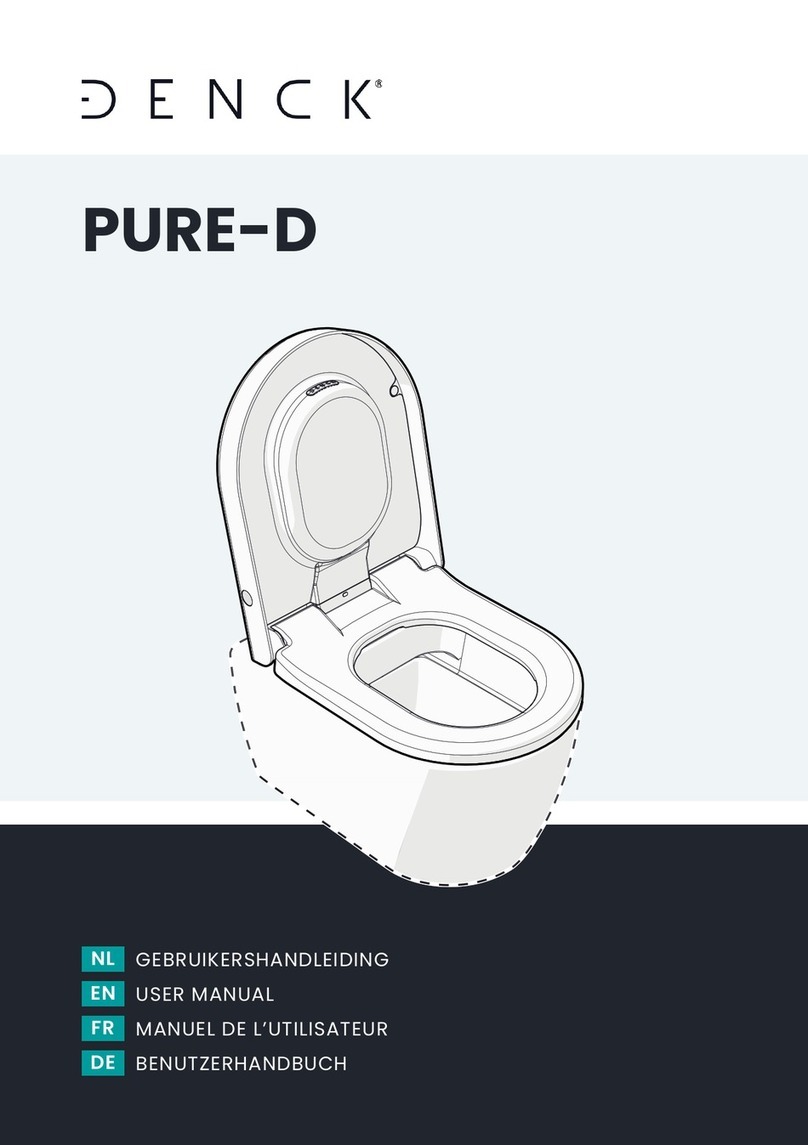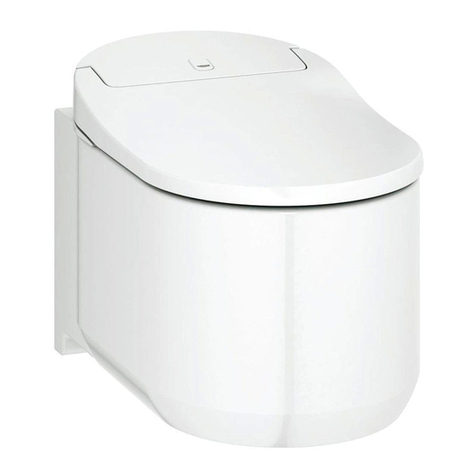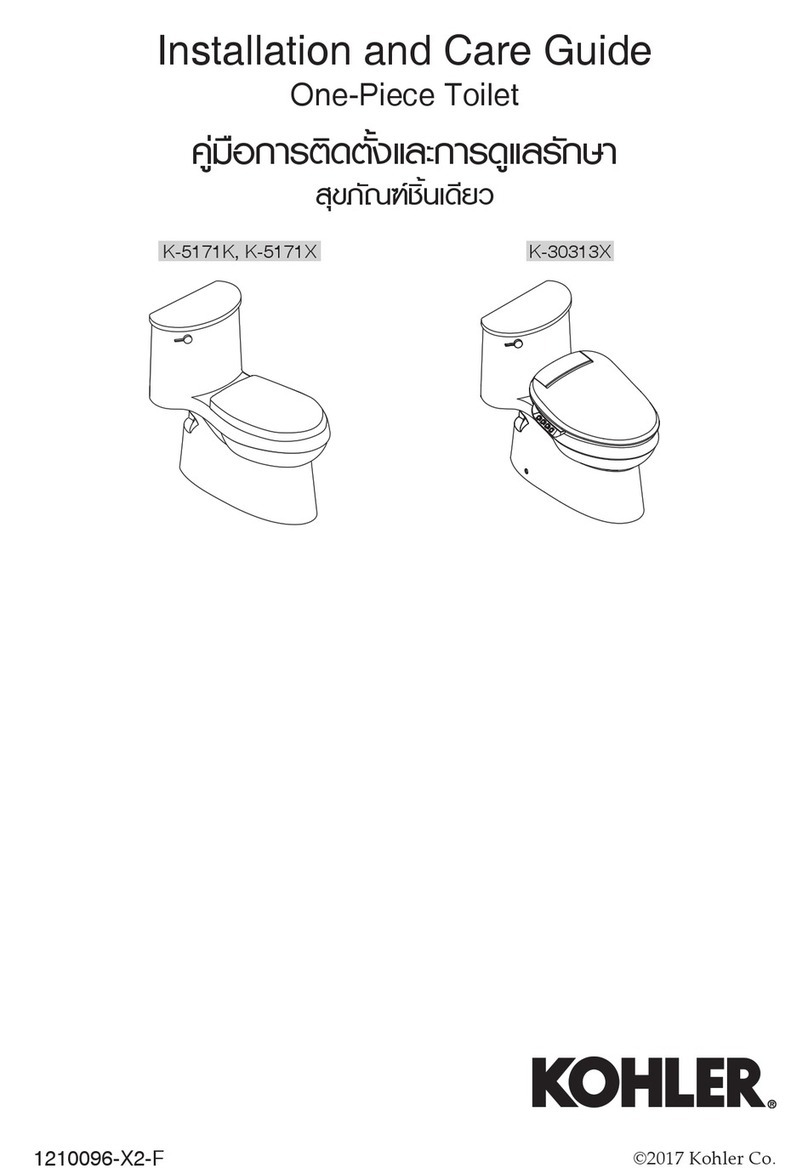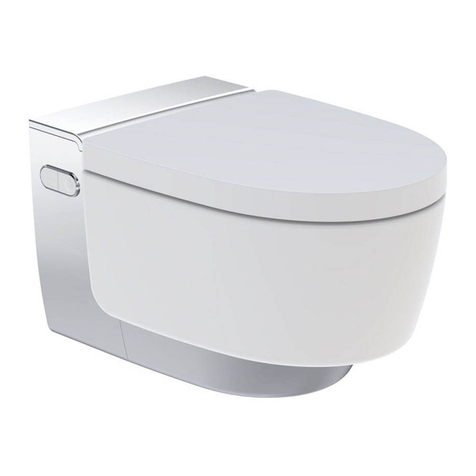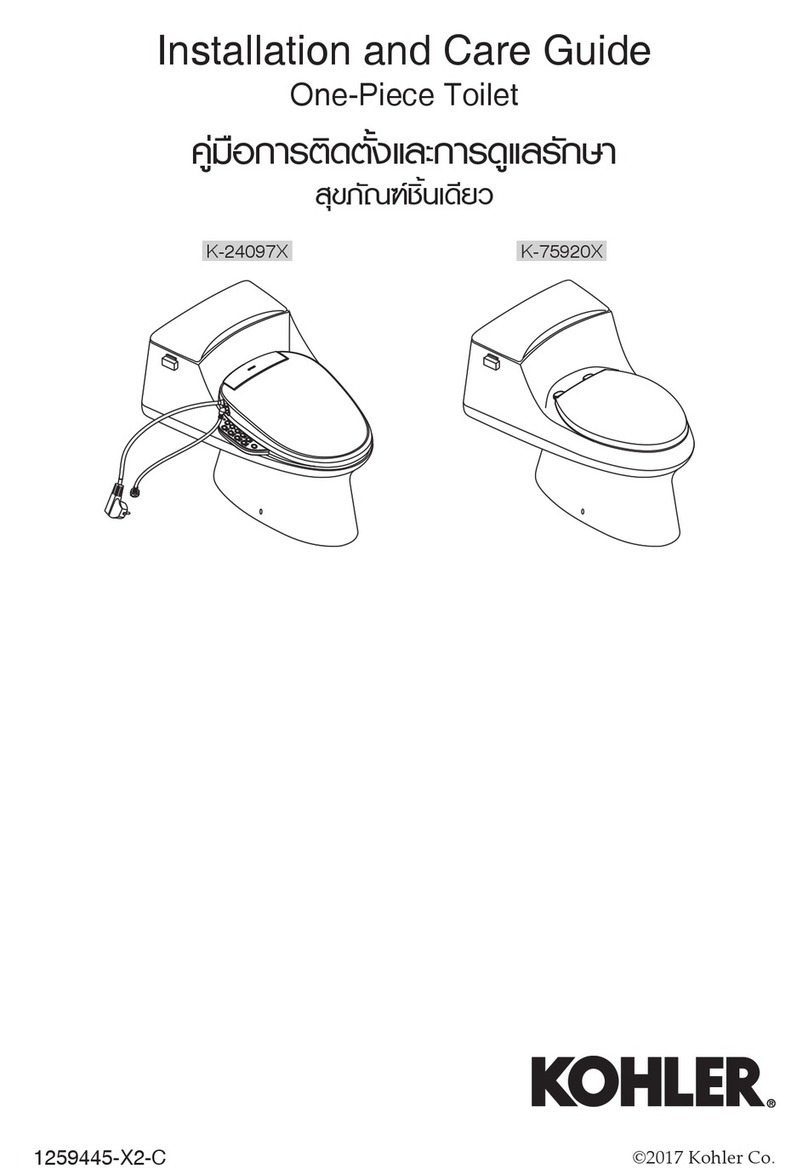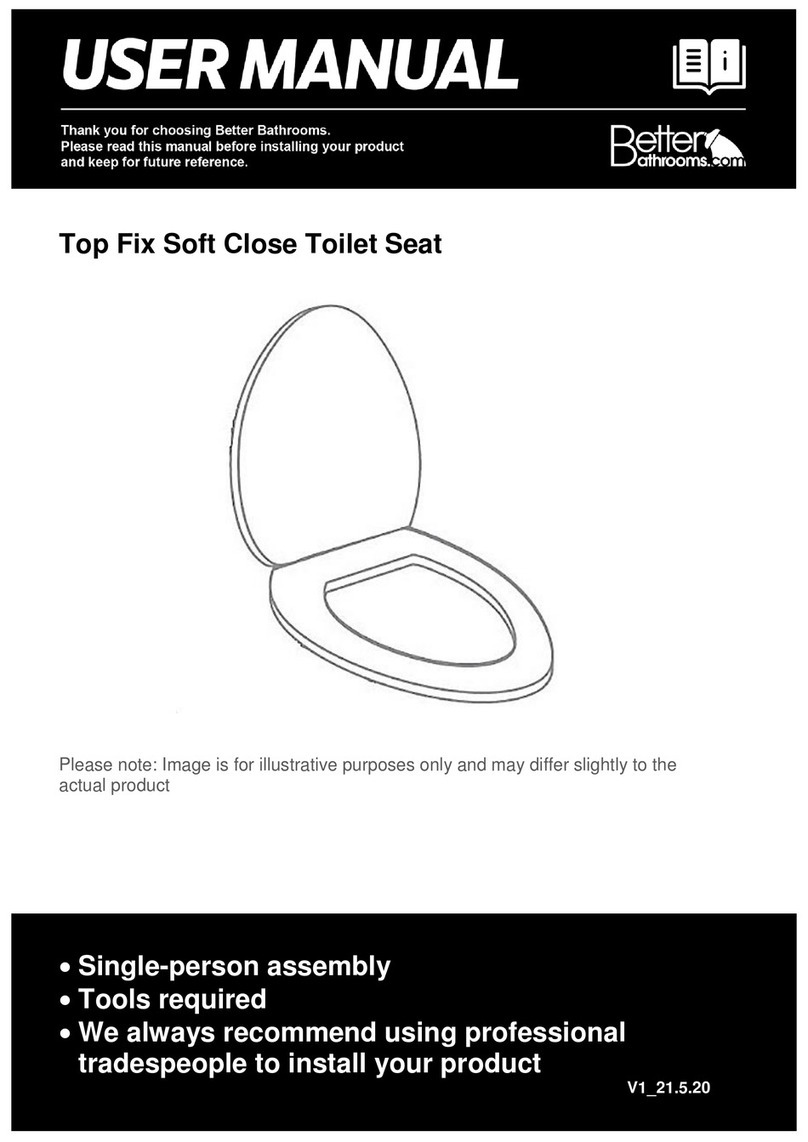
CENTREX 2000 Electric Installation
Space
Required and other
Installation
Considerations
Vent Pipe
Location
Electrical
Considerations
1) Compost will be removed from the finishing drawer. Ensure that there is at least 17” in front of
the CENTREX 2000 so that the drawer may be removed from the unit.
2) Install the unit in a location where the safety drain can be connected. This drain exits from the
left side of the unit and must slope downward at all points.
3) Install in a location where the vent pipe can be attached as per the instructions listed below.
4) Install in a location that is not air tight.
5) Ensure that the CENTREX 2000 is accessible for ongoing maintenance.
6) Ensure that the installation area is a minimum height of 28”.
WE DO NOT RECOMMEND
DIGGING BELOW GROUND TO FACILITATE THE INSTALLATION OF THE CENTREX 2000.
7) Ensure the CENTREX 2000 is protected from precipitation.
1) If running a vent through a wall, it should be done at a 45° angle to prevent condensation from
accumulating in the vent pipe,causing a constriction.
THERE SHOULD BE NO HORIZONTAL
SECTIONS OF VENT.
Venting should be installed vertically.
2) All vent pipe that is exposed to the outside or in a non-heated space should be insulated if
using the unit during cold weather.
3)
INSTALL VENT SO THAT IT TERMINATES 24” - 30” ABOVE HIGHEST PEAK OF THE ROOF.
4) If you will be installing venting on a steeply pitched roof where snow shear may occur;Install a
heavier pipe through the roof and feed the enclosed vent through the heavier pipe.Seal
between the pipes with expandable foam or other such water-tight substance. The heavier pipe
should be able to withstand the weight of sliding snow.
5) If there is more than 36” of vent needed above the roof line to reach 24-30” above the highest
peak of the roof (diffusor included in measurement), use guy wires to secure the vent above
the roof.
6) Limit bends in the vent stack to no more than 4 that have a combined total of 180 °.
7) The vent must be installed separately from ALL other household vents. Venting cannot be
merged with other venting.Doing so will prevent the unit from operating odorlessly.
8) All connectors in the vent pipe should be sealed.
Use silicone caulking to seal the connection
between the vent and the fan.
PVC cement may be used all other vent connections.
9) The diffusor should be glued vertically on to the top of the vent pipe. This assembly helps draw
air up the vent pipe.
Possible venting configurations for
the 2” electric vent pipe.
The fan will run continuously 24 hours per day. A ground fault interrupter (GFI) circuit is recommended
for any unit installed in an environment where it will be exposed to moisture. This may be installed direct-
ly on the wall socket or at the circuit breaker. If you are in an area where you experience power fluctua-
tions, you may wish to install a surge protector.
Some 230V models may have an over current fuse protection on the heating element circuit which is
located on the electric box.
- 6 -

